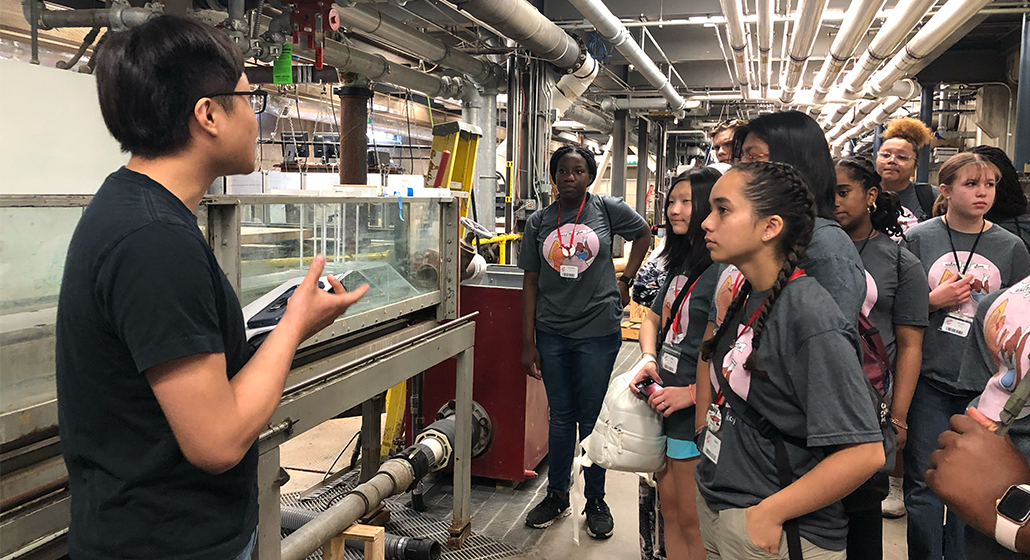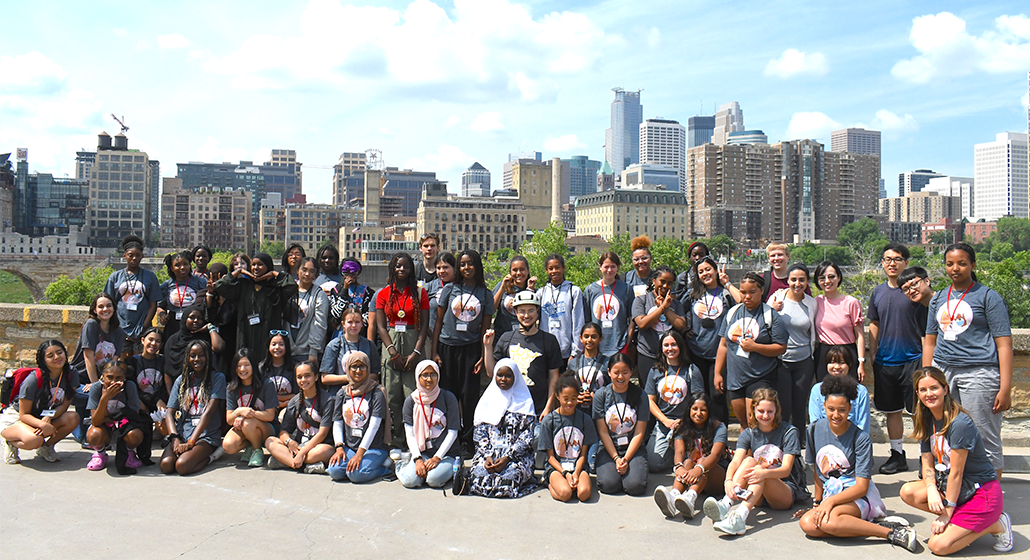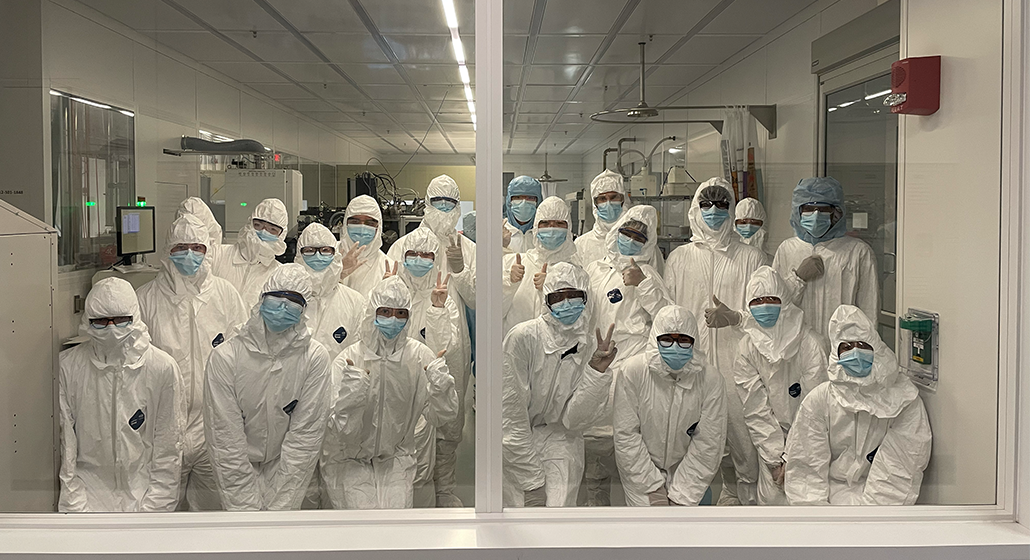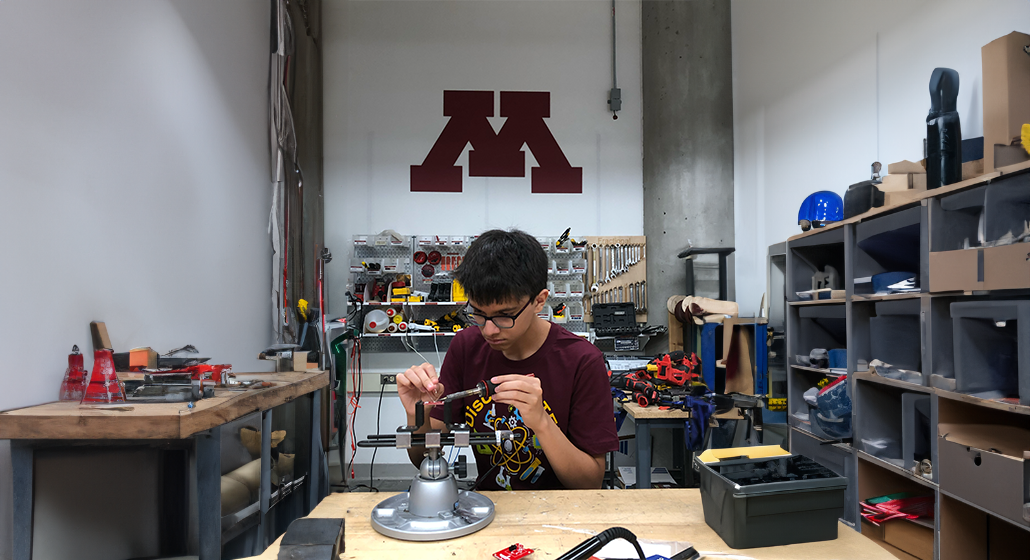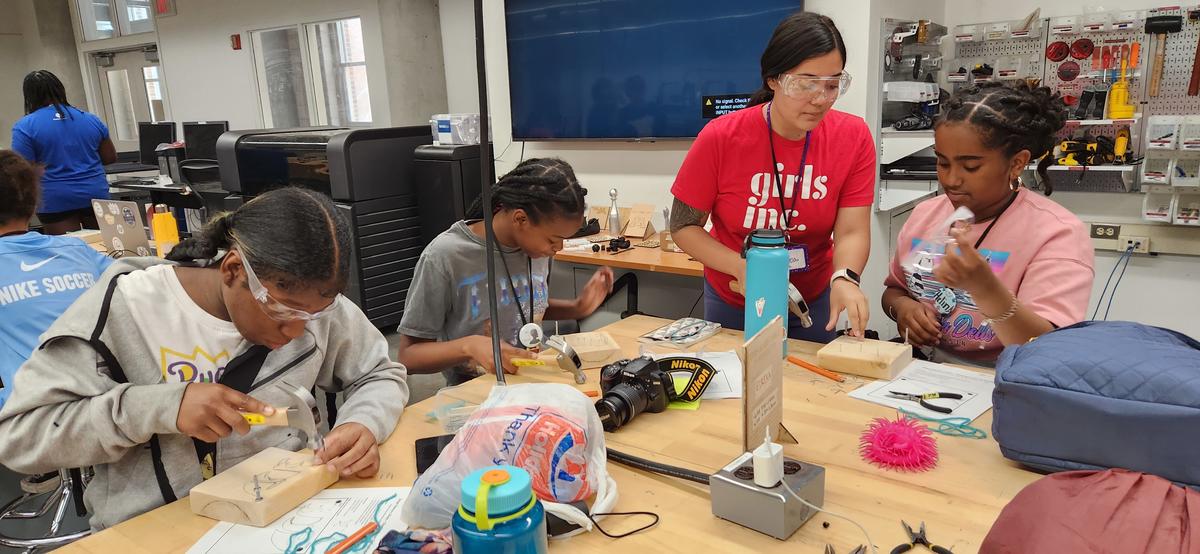
A few hundred miles downriver of the Mississippi headwaters in Lake Itasca, on a hot summer day in July, the University of Minnesota’s St. Anthony Falls Laboratory (SAFL) is bustling with activity. Students are collecting water, nutrient, and sediment samples. Researchers are digging into wave patterns and the lives of the diverse microorganisms floating by. There are a million data points to collect as the water flows from the upper pool by the falls into the lab’s facilities before it’s released again to meander to the Gulf of Mexico.
St. Anthony Falls in Minneapolis is unique—the Mississippi River’s only major natural waterfall from origin to delta. And the laboratory team from the College of Science and Engineering (CSE) is uniquely equipped to monitor the health of the river, the nutrient load in the water, and all the eddies and flows that house a wealth of biodiversity. Into this environment of experiment and discovery, a group of eighth and ninth grade girls enter each summer, as part of a University-community partnership program backed by 3M.
This year’s cohort of participants—52 girls—were at the falls as part of Girls Inc. Eureka!, one of several summer programs hosted in CSE. Along with a program for older high school students called Discover STEM, the programs invite students into close encounters with researchers, faculty, and students engaged in science, technology, engineering, and mathematics.
Eureka! “I have found [it]!”
Eureka! is a five-year program that starts with two years of classroom and laboratory experiences in STEM fields at the U of M. The final three years include internship opportunities curated to build on the passion and skills discovered and developed during the initial two years on the U’s campus. Minneapolis YWCA runs the program, in partnership with CSE staff.
In addition to their time at SAFL, the eighth and ninth graders sampled STEM sessions in 15 different CSE departments and research centers. “We’re in labs, classrooms, doing hands-on experiments, and learning how to engage and dig deeper in STEM,” says CSE youth programs coordinator Christine Newville. “We’re working to introduce the girls to as wide a variety of topics as we can, while facilitating experiences we hope will be foundational and pivotal in their lives.”
Eureka! is particularly interested in drawing students from communities that have been historically marginalized or underrepresented in STEM careers. Newville reports the program’s emphasis is effective: “84 percent of the participants this year are Black, Indigenous, or People of Color.” As CSE faculty and staff plan for and shape the program, Newville notes their desire to meet upcoming needs in STEM fields. “Computer science and physics are of special interest to many of the students,” she says. “Because our goal is to best serve our participants and our local communities, we are looking for options to increase opportunities in computer science, electrical engineering, physics, and astronomy in the coming years.”
Discover STEM
Eureka! is one of several summer programs run at the U of M in partnership with 3M. While Eureka is focused on opening doors for girls in grades eight to 12, Discover STEM is designed for students in 11th or 12th grade. The week-long program (repeated three times over the course of the summer), also explores the wide variety of STEM pathways available at CSE.
“Discover STEM works to build identity as future college students and STEM professionals along with gaining transferable skills like resiliency, teamwork, and communication,” says Newville. To that end, participants learn about current topics in research and explore academic programs and career pathways through presentations, laboratory tours, science experiments, technology demonstrations, and question and answer sessions with CSE faculty, graduate researchers, and undergraduate students.
There were 75 participants over the summer, with eight unique STEM sessions filling their week, as well as visits to the Minnesota Nano Center and Anderson Innovation Labs. The high school students also visited the University of Minnesota Medical School, with a stop in assistant professor Alon Herschhorn’s microbiology research lab where Herschhorn and his team are studying cell biology, immunology, and virology with clinical studies in HIV-1 infection and vaccination.
Building a STEM pipeline
Generous support from 3M makes these programs possible, and helps fulfill CSE’s goal to train STEM learners and leaders for tomorrow.
“Part of the program is to cultivate a relationship with high school aged youth with the goal of encouraging their decision to attend the University of Minnesota,” says Newville. “Since Discover STEM’s inception in 2015, approximately 180 participants have enrolled at the University of Minnesota for their post-secondary education, with more than 100 of them enrolling in CSE.”
Newville and her team are already busy planning for next summer. “We’re excited to be able to do away with all fees previously charged for participation in Discover STEM,” she says. “That’s a positive outcome of continued generosity from our partners like 3M.”
